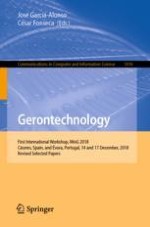2019 | OriginalPaper | Buchkapitel
An Approach to Help Identifying Optimized Service Areas of Integrated Continuous Care Teams (ECCI): A Case Study in Alentejo - Portugal
verfasst von : Henrique Oliveira, Manuel José Lopes, César Fonseca, Margarida Goes, David Mendes, José Caeiro
Erschienen in: Gerontechnology
Aktivieren Sie unsere intelligente Suche, um passende Fachinhalte oder Patente zu finden.
Wählen Sie Textabschnitte aus um mit Künstlicher Intelligenz passenden Patente zu finden. powered by
Markieren Sie Textabschnitte, um KI-gestützt weitere passende Inhalte zu finden. powered by
